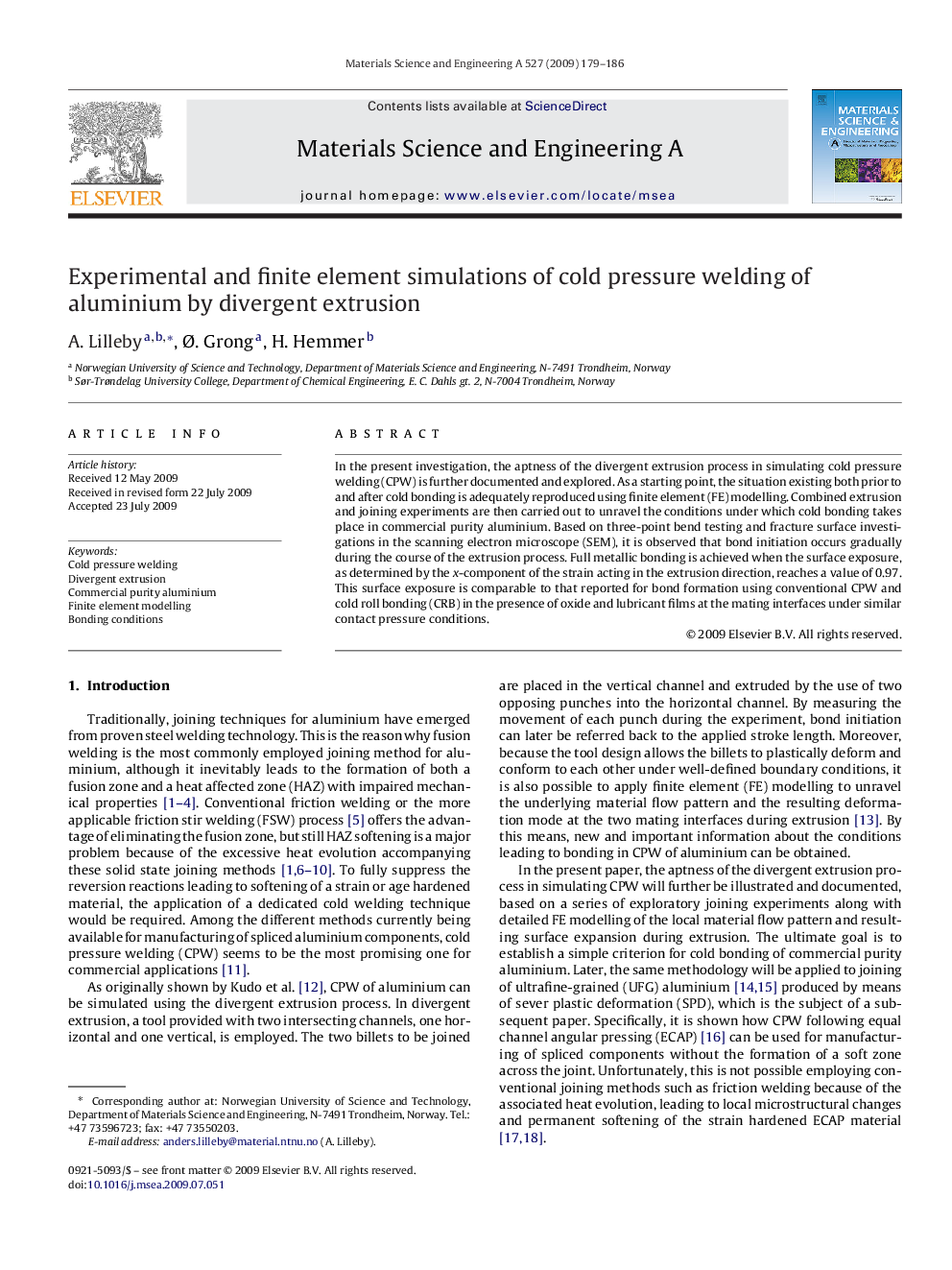| Article ID | Journal | Published Year | Pages | File Type |
|---|---|---|---|---|
| 1580258 | Materials Science and Engineering: A | 2009 | 8 Pages |
Abstract
In the present investigation, the aptness of the divergent extrusion process in simulating cold pressure welding (CPW) is further documented and explored. As a starting point, the situation existing both prior to and after cold bonding is adequately reproduced using finite element (FE) modelling. Combined extrusion and joining experiments are then carried out to unravel the conditions under which cold bonding takes place in commercial purity aluminium. Based on three-point bend testing and fracture surface investigations in the scanning electron microscope (SEM), it is observed that bond initiation occurs gradually during the course of the extrusion process. Full metallic bonding is achieved when the surface exposure, as determined by the x-component of the strain acting in the extrusion direction, reaches a value of 0.97. This surface exposure is comparable to that reported for bond formation using conventional CPW and cold roll bonding (CRB) in the presence of oxide and lubricant films at the mating interfaces under similar contact pressure conditions.
Related Topics
Physical Sciences and Engineering
Materials Science
Materials Science (General)
Authors
A. Lilleby, Ã. Grong, H. Hemmer,
